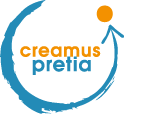
Projektmanagement im Überblick
Sobald Sie sich für creamuspretia als Ihren Partner für Ihr Projekt entscheiden haben, bieten sich eine Anzahl von Methodologien, um das Projekt durchzuführen. Diese reichen von einem iterativen bis hin zu einem inkrementellen oder phasenbasierten Ansatz.
Unanbhängig davon, welche Methode zum Einsatz kommt, gilt es sorgfältig zu erwägen welche Projektziele, welcher Zeitrahmen und welches Budget unter Nutzung der verfügbaren Projektrollen und Verantwortlichkeiten der Projektbeteiligten und Projektauftraggeber zu berücksichtigen sind.
Der traditionelle Projektansatz im Wasserfallmodell
A traditional phased approach identifies a sequence of steps to be completed. In the "traditional approach" five developmental components of a project can be distinguished (four stages plus control):
- initiation
- Project planning and design
- execution and construction
- monitoring and controlling systems
- completion
Not all projects will have every stage, as projects can be terminated before they reach completion. Some projects do not follow a structured planning and/or monitoring process. And some projects will go through steps 2, 3 and 4 multiple times.
Many industries use variations of these project stages. In software development this approach is often known as the waterfall model i.e., one series of tasks after another in linear sequence.Waterfall development works well for small, well defined projects, but often fails in larger projects of undefined and ambiguous nature. The Cone of Uncertainty explains some of this as the planning made on the initial phase of the project suffers from a high degree of uncertainty. This becomes especially true as software development is often the realization of a new or novel product. In projects where requirements have not been finalized and can change,requirements management is used to develop an accurate and complete definition of the behavior of software that can serve as the basis for software development.While the terms may differ from industry to industry, the actual stages typically follow common steps to problem solving —"defining the problem, weighing options, choosing a path, implementation and evaluation."
Das agil strukturierte Projekt
It is the most consistent project management technique since it involves frequent testing of the project under development.Agile project management approaches, based on the principles of human interaction management, are founded on a process view of human collaboration. It is "most typically used in software, website, technology, creative and marketing industries. This contrasts sharply with the traditional approach. In the agile software development flexible product development approach, the project is seen as a series of relatively small tasks conceived and executed to conclusion as the situation demands in an adaptive manner, rather than as a completely pre-planned process. Advocates of this technique claim that:
- It is the only technique in which the client will be actively involved in the project development.
- The only disadvantage with this technique is that it should be used only if the client has enough time to be actively involved in the project every now and then.
Methods:
- Scrum (software development)- A holistic approach to development that focuses on iterative goals set by the Product Owner through a backlog, which is developed by the Delivery Team through the facilitation of the Scrum Master.
Dieser Artikel verwendet (aus dem Englischen übersetztes) Material aus dem Wikipedia Artikel "Project Management". Die Verwendung dieses Materials geschieht unter Befolgung der Bestimmungen in der Creative Commons Attribution-Share-Alike License 3.0


.png/320px-Project_Management_(phases).png)
